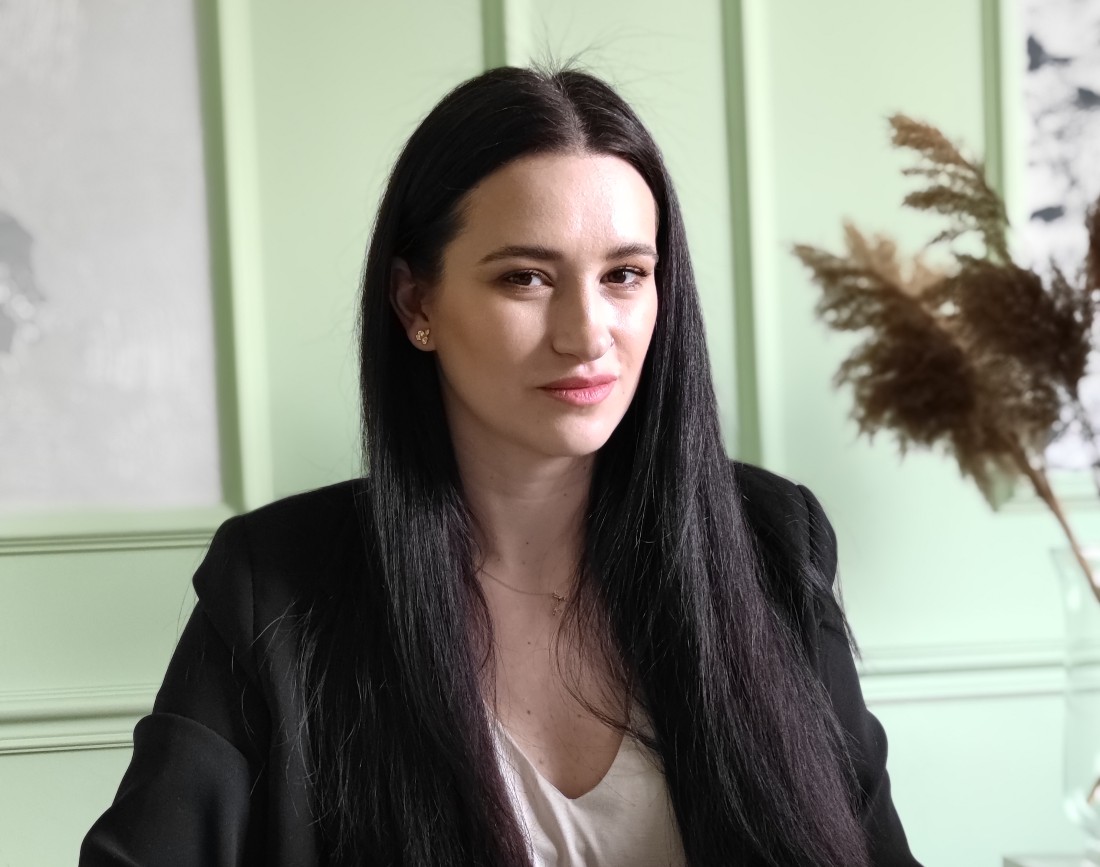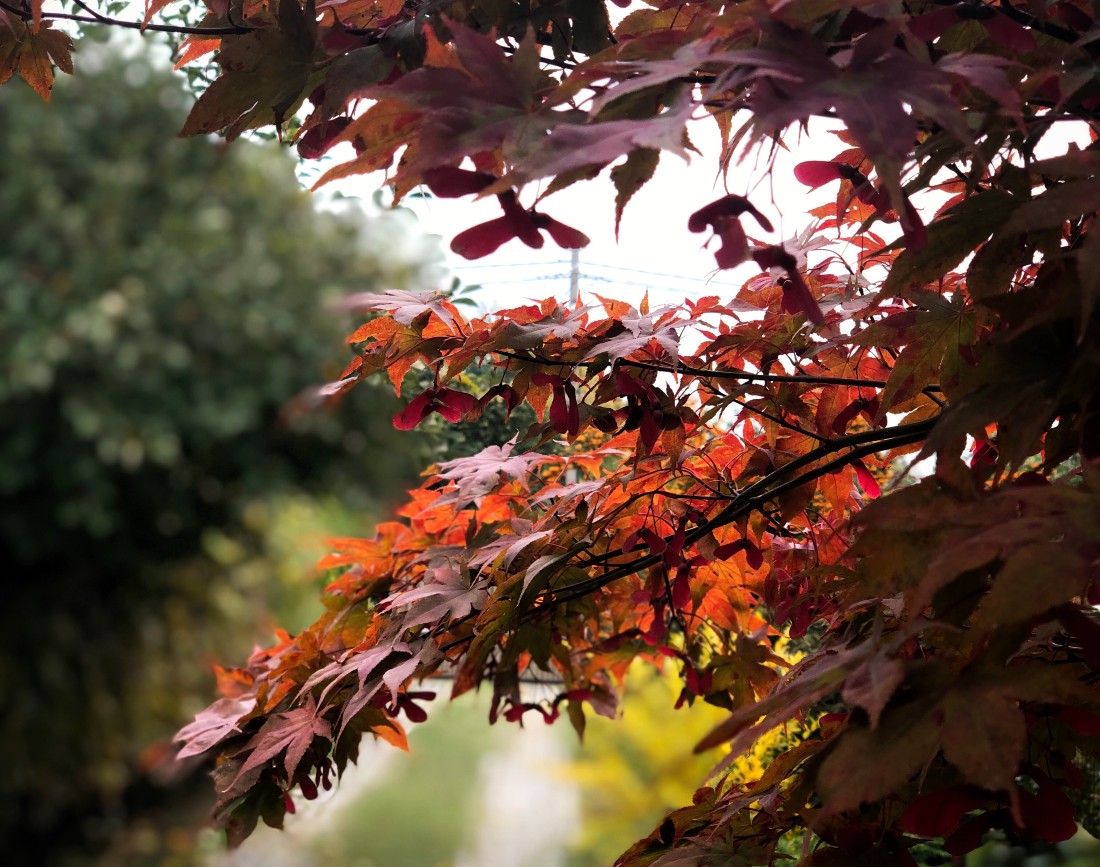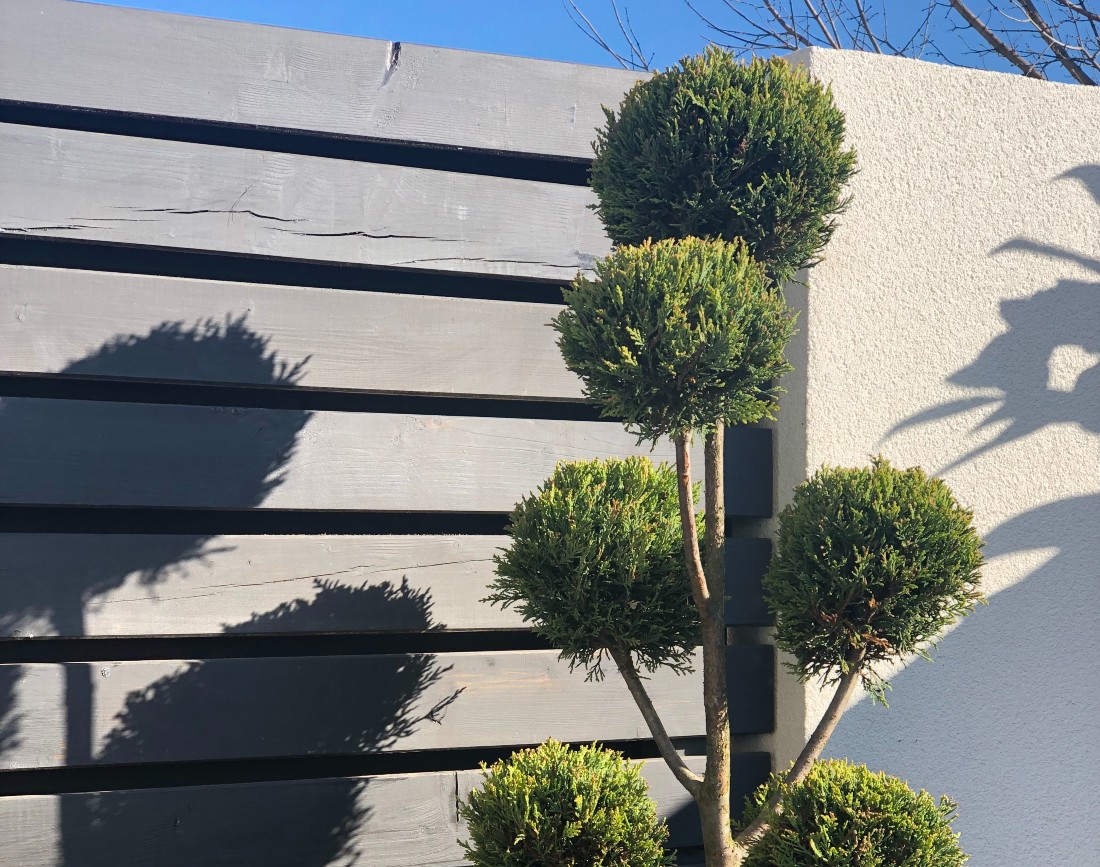Fakten zur Landschaftsarchitektur: Interview mit Diana Gadea
publicat in: Allgemein // Publicata pe 19.03.2025
If you ever considered landscaping your garden, you probably didn’t even realize that you will need a landscape architect. Still, a backyard landscape is essential, especially because it involves working with plants and a constantly changing design.
Know-how is essential in this field, therefore we invited Diana Gadea, landscape engineer and founder of ARTemis to offer us more info on her daily job. The first episode of our discussion is available below.

Diana Gadea, landscape architect and ARTemis Landscape founder, photo source: Diana Gadea
1. How did you discover landscape architecture?
Diana Gadea, landscape architect and founder of ARTemis: This is a very complex answer. I studied at the University of Architecture abroad. At the time, I had a passion for interior design, but due to its technical structure it rejected me. I’ve polished my experience in the field for a couple of years and at the same time, I’ve applied for Landscape Design department at the Faculty of Horticulture, thus graduating as landscape engineer.
In Romania, landscape architects are the graduates from the Faculty of Urban Planning at "Ion Mincu University of Architecture and Urbanism", except with more technical background. We manage to combine the horticulturist features much better, since we are familiar with the plants, plus the technical aspects of concepts and design compositions.
2. What are the steps of an outdoor design project?
D.G.: I like to get to know the customer. It's important to figure out the target of such decoration project, plus its final destination. Some customers want to use that space just for the view, but some clients intend to use the outdoor space for different areas for relaxation, for a vegetable garden, for different herbs, a sensory garden, a summer swimming pool, barbecue areas, playgrounds for children.
"I'm interested in everyone's hobbies, plus a total family member. I start with a person, then move on to the space analysis."
How the sun shines, from where, which areas have lighter or shade, what happens to the neighbors, whether I want to see them or not. I need to know what's going on around the yard so I can think about the spaces and pathways.
I start from a concept and think about the areas, I treat the alleys and from close to close, we go deeper, the textures we use, the materials, the plants, we go to the execution details area if there are constructions and those need more details. Afterward, even if I make a very detailed and composed vegetation plan, with the plant’s size, plus how many species I need. I always shop with my clients and we select the plants together.
.jpg)
Garden Landscape for a vacation house in Prahova County, photo source: Diana Gadea
The healthiest landscape project is the complete one, where we have a unified concept of the space. Even if the customer doesn't have the budget at the time of signing, we can phase it so that even if we work in parts, the concept is one.
"When I think about the vegetation, I think about it for how it is now, but also how it will be in 10 years".
3. In the Bucharest area, what plants would you recommend depending on climate change?
D.G.: Even if customers don’t have a thing for large lawns, lawns don't produce so much oxygen, nor purify the air sufficiently. Therefore, I prefer to decorate with plants. Even if the customer asks for a space that can be used for running and other activities, I try to insert plants in different areas for purifying the air.
I try as much as possible to consider pollution, biodiversity, the extinction of bees and the life that feeds and lives in these ecosystems.
4. People are increasingly attracted to the idea of spending time outside. As a landscape engineer, how do you feel about it?
D.G.: There are a lot of people who have become involved in outdoor space, people who live at home and don't care about what's going on in their backyard. Then, there are a lot of people who have moved into the house and a lot more who have landscaped their patios and balconies which were often unused spaces.

Landscaping the courtyard of an apartment located on the ground floor of a building, photo source: Diana Gadea
People have started to look for and exploit these spaces and then realized that experts are best placed to help.
5. How does the customer takes care of the garden after the landscape architect hands over the project?
D.G.: Some people who declare from the start that they don't have time to take care of the garden and ask us for recommendations on maintenance services. Then, there are the customers who realize they don't have time to do it, plus they can't afford it. So, I design their landscaping in such a way that it doesn't require a lot of attention. And of course, some people like to work around the yard and take care of the plants.
6. Diana, tell us about your pet project.
D.G.: I have many small projects. Most of the time, the backyards around Bucharest will not exceed 150-200 sqm. I want more than 1,000 sqm. I had one such project a few years ago with a lake included. There was also a small cave, a tennis court, a swimming pool, an orchard.
7. Tell us a bit about how you landscaped the lake area and the project itself.

Backyard landscape in the south of Bucharest, cobblestone walkway plus Japanese maple in autumn colors, photo source: Diana Gadea
D.G.: This is a courtyard that was landscaped ten years ago and they were looking for a refresh. The lake was already there. We used composition a lot, and bridges that allowed us to build vantage points. To be able to see from a different angle.
8. What are the biggest problems landscape architects face?
We still feel the need to educate our clients, to be allowed to do our job. I always let my client have their say. It's a space created for him in which he lives. At the intersection of these two things, between my expertise and the client's wish, I somehow need my freedom to do my job. Some elements of design are co-dependent, so you can't do some things because you need to fix others.
9. What is the ideal planting time?
D.G.: We have two planting periods: spring and autumn. Most of the time, the customer is looking for a landscape architect in the spring and says they want it now, in a month. It's very hard for us to take projects and complete them in one month. In winter, very few people think they want spring.
Ideally, we should divide it into two phases. Those that can be implemented towards spring and those that require autumn implementation and therefore summer planning.

Backyard Landscape in the south of Bucharest in autumn colors photo source: Diana Gadea
10. Why is it not recommended to plant in summer?
D.G.: There are solutions to plant in summer. If we go to a nursery for example, which is a plant seller, they will say that we can plant in summer because the interest is to have this sale and this continuous course of plants. Drought is a drawback of summer. A plant finds its best place in the autumn because it manages to come out of vegetation, it is located in a new place, and by spring when it reaches the vegetative stage, it acclimatizes to the wind, to the space and the soil, to all these factors that influence the plant’s growth. In summer, things are not necessarily possible because the soil is often dry, no matter how much you water it. Of course, we have solutions, many granules that can be placed in the soil for retaining water, but we need extra care and maintenance for the plant.
H2 "Plants are still living things".
Most plants start flowering in May or June and finish flowering in August-September. Basically, I take the plant from a place where it's doing well and move it to a place where it's not doing well in the middle of that time and it's not doing well for it.
11. As a landscape engineer, what changes do you notice in terms of climate?
D.G.: There are changes, but they are kept under control. I think the most issues involve fruit trees and of course losses. Decorative plants don't suffer so much. There was a significant change last spring. Peonies have a flowering period of one week, but last year they lasted much less. They bloomed later, but didn't last as well.

Backyard landscape project in Sisesti, Bucharest Metropolitan Area, photo source: Diana Gadea
Magnolias did not have the same endurance and flowering period. Some things are constantly changing and we, as experts, find it very difficult to find an explanation and a solution for combating this problem because from one year to the next, there are things that change and we will probably reach a constant point at some point to know what the temperatures are and to find the solution for these things.
This is the first part of the interview with Diana Gadea, stay tuned for more in part two.
If you'd like to work with Diana, you can find her on the ARTemis Facebook page and also on Instagram.
Im Moment gibt es keine Kommentare von unseren Nutzern.
Schreiben Sie einen Kommentar oder eine Bewertung!